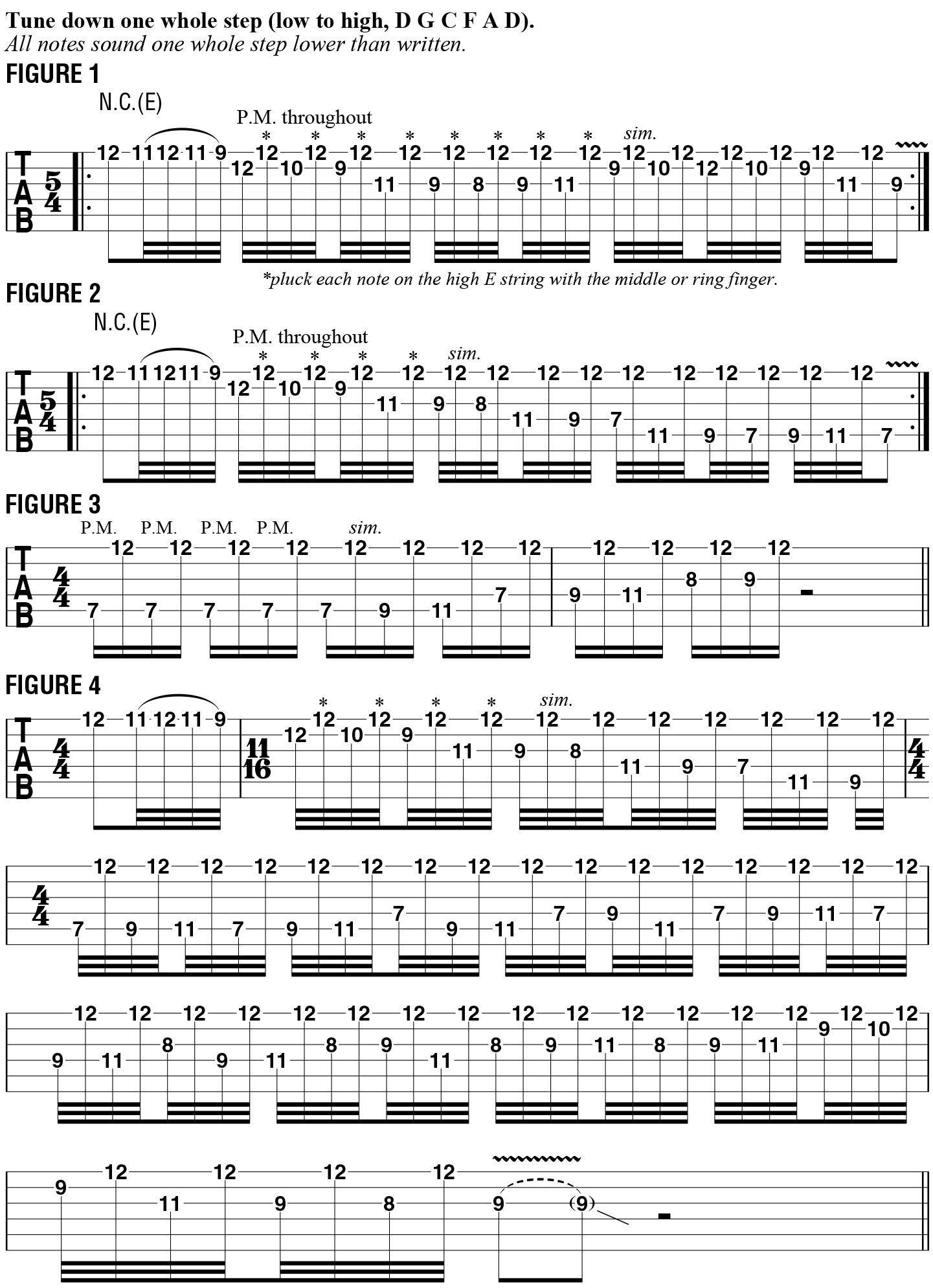More Ways to Utilize “Chicken Pickin’ ” in a Metal Solo
With a little diligent practice, the possibilities that this technique will offer are virtually endless.
A few months back, I introduced the concept of incorporating country-style “chicken pickin’ ” into metal solos. The technique, as its name implies, emulates the clucking sound of a chicken and is performed with hybrid picking; which integrates the use of flatpicked downstrokes, performed with the plectrum, and fingerpicking, usually performed in an aggressive manner that results in strings snapping against the fretboard.
In the previous columns that included chicken-picked licks, I emphasized the elementary approach of limiting yourself to a pair of adjacent strings, beginning with a flatpicked downstroke on the lower of the two strings, followed by a fingerpicked upstroke on the higher string, performed with either the middle or ring finger. This month, I’d like to demonstrate how to move the flatpicked note to other lower, non-adjacent strings while maintaining the fingerpicked note on the high E string.
In the following examples, I play melodies based on the E major scale (E F# G# A B C# D#) through multiple octaves while utilizing both string skipping and chicken pickin’ techniques. The phrases involve the use of a recurring high E note on the first string’s 12th fret string, which serves as a root-note pedal tone above all the other melody notes.

In FIGURE 1, I begin with a high E note followed by a hammer-on and double pull-off that moves between the notes E, D# and C# on the first string. Once I land on the subsequent B note, second string, 12th fret, I initiate the chicken-picked alternating-string technique, descending through the notes of the E major scale on the B and G strings while repeatedly fingerpicking the high E note between each of the other notes. As you play this figure, try to keep your pick hand relaxed so that it will feel comfortable and not become fatigued from unnecessary muscular tension.
Let’s expand this approach to include more notes of the E major scale on lower strings. I begin FIGURE 2 the same way as before and then descend through two and a half octaves, bringing the fourth and fifth strings into play. Practice this lick slowly and deliberately before ramping up the tempo.
An effective practicing drill is to isolate the technique in order to hone it on its own. In FIGURE 3, I begin with pairs of E notes two octaves apart before ascending through the E major scale in alternating fashion against the fingerpicked high E note.
This technique and approach may be applied to ascending and descending patterns of threes, fours, fives, etc. In FIGURE 4, I descend through the notes of E major as I had done in FIGURE 2, followed by ascending back up through the scale in groups of four.
Now that you understand the concept, try devising licks of your own in as many other keys and fretboard positions as possible. I love using this technique in my playing, and, as you will discover, with a little diligent practice, the possibilities are virtually endless.
Get The Pick Newsletter
All the latest guitar news, interviews, lessons, reviews, deals and more, direct to your inbox!









